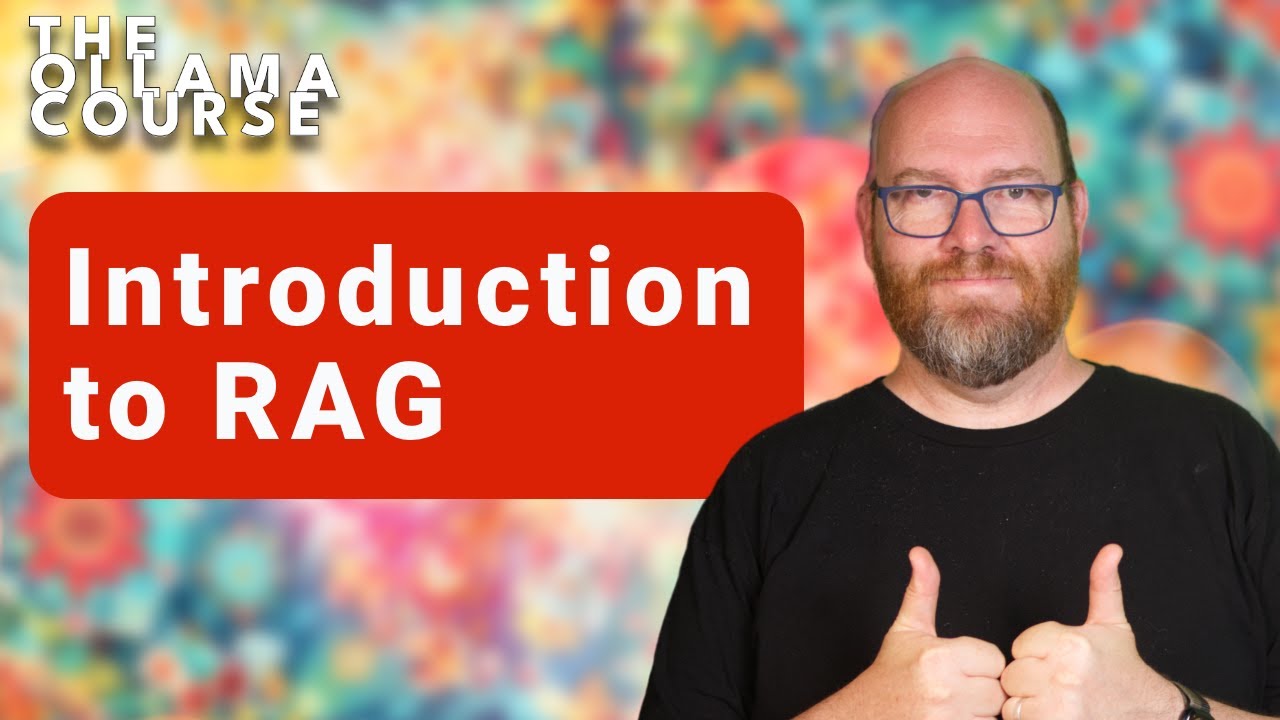The video introduces Retrieval-Augmented Generation (RAG), a technique that enhances AI models by integrating relevant information from external documents to improve accuracy and timeliness in responses. It outlines the process of preparing documents, chunking text, creating embeddings, and building prompts to enable effective retrieval and contextualization of information for AI-generated answers.
The video is part of the Free Ollama Course and focuses on the concept of Retrieval-Augmented Generation (RAG), a technique designed to enhance AI models’ ability to provide accurate and up-to-date information. The presenter discusses the limitations of AI models, such as their tendency to hallucinate, the inconsistency of answers, and their outdated knowledge due to the lengthy training process. This highlights the need for methods to incorporate more recent information into AI responses, especially for events that have occurred in the last few weeks or months.
RAG is introduced as a solution to these challenges. It allows AI models to generate answers that are supplemented with relevant information retrieved from a collection of documents. The video emphasizes the importance of preparing the documents properly before using them in RAG. The presenter explains that documents should be in a format that allows for easy extraction of clean text, as formats like PDF can complicate this process. If the source text is not readily available, it may require additional effort to obtain it.
Once the text is extracted, it cannot be stored as a single contiguous stream due to context size limitations and potential confusion from excessive data. Instead, the text should be chunked into smaller, manageable pieces. The video discusses various methods for chunking text, such as by character count, tokens, or paragraphs, and the potential benefits of overlapping chunks to maintain context. This step is crucial for ensuring that the RAG system can effectively retrieve relevant information.
The next step involves creating embeddings, which are numerical representations of the text chunks. The presenter explains that embeddings allow for the semantic comparison of text, making it easier to identify the most relevant chunks in response to a prompt. The video also touches on the importance of storing both the embeddings and the raw text in a vector database, which facilitates efficient retrieval and comparison of text chunks.
Finally, the video outlines the process of building a prompt for the AI model using the retrieved text chunks. By embedding the initial question and querying the vector database, the system can return the most relevant chunks, which are then included in the prompt to provide context for the model. This approach effectively enhances the model’s ability to answer questions based on specific information it may not have known previously. The presenter concludes by mentioning that future videos will delve deeper into the components of RAG and demonstrate practical applications, encouraging viewers to engage with AI technology through the Ollama platform.
